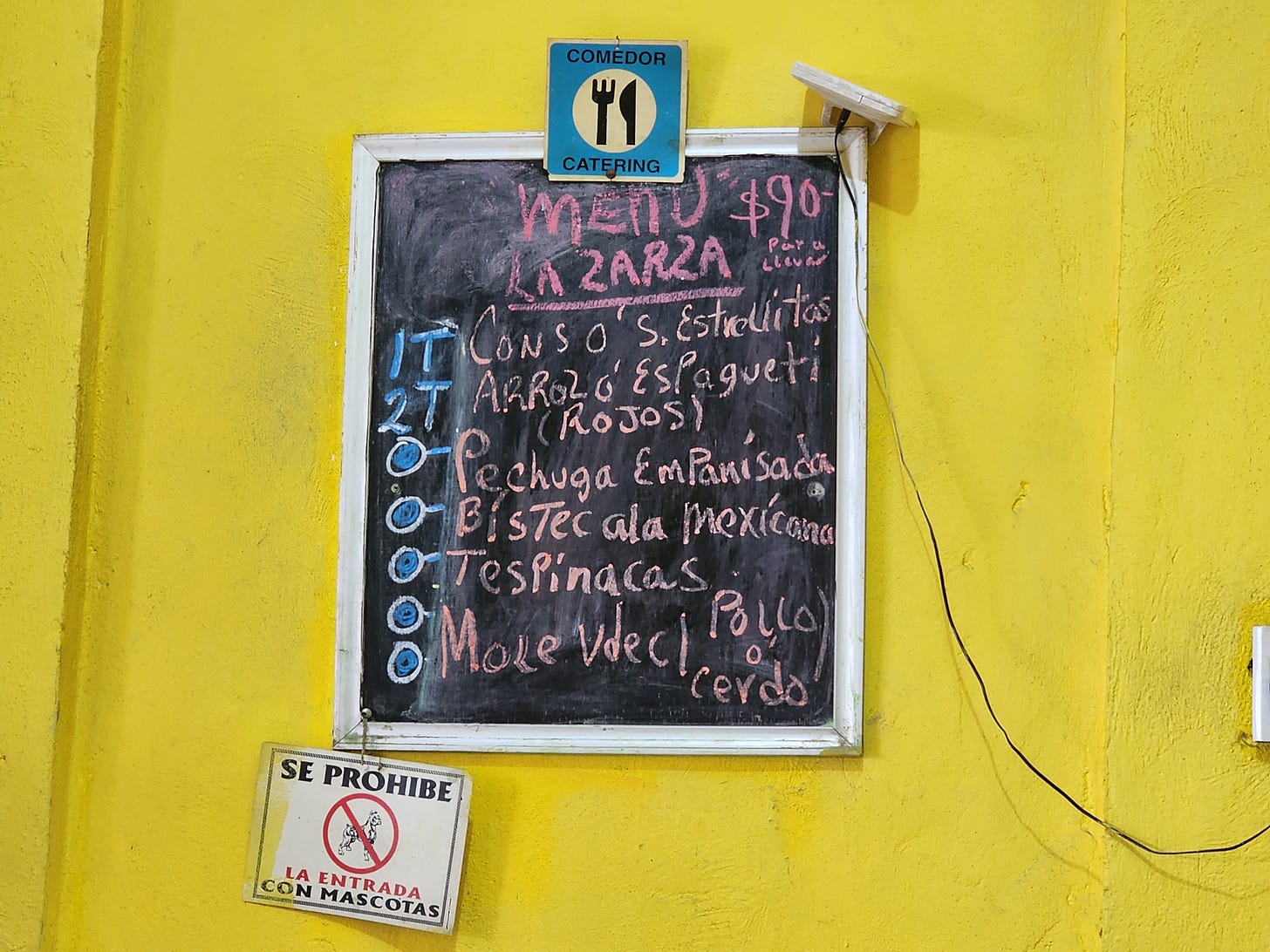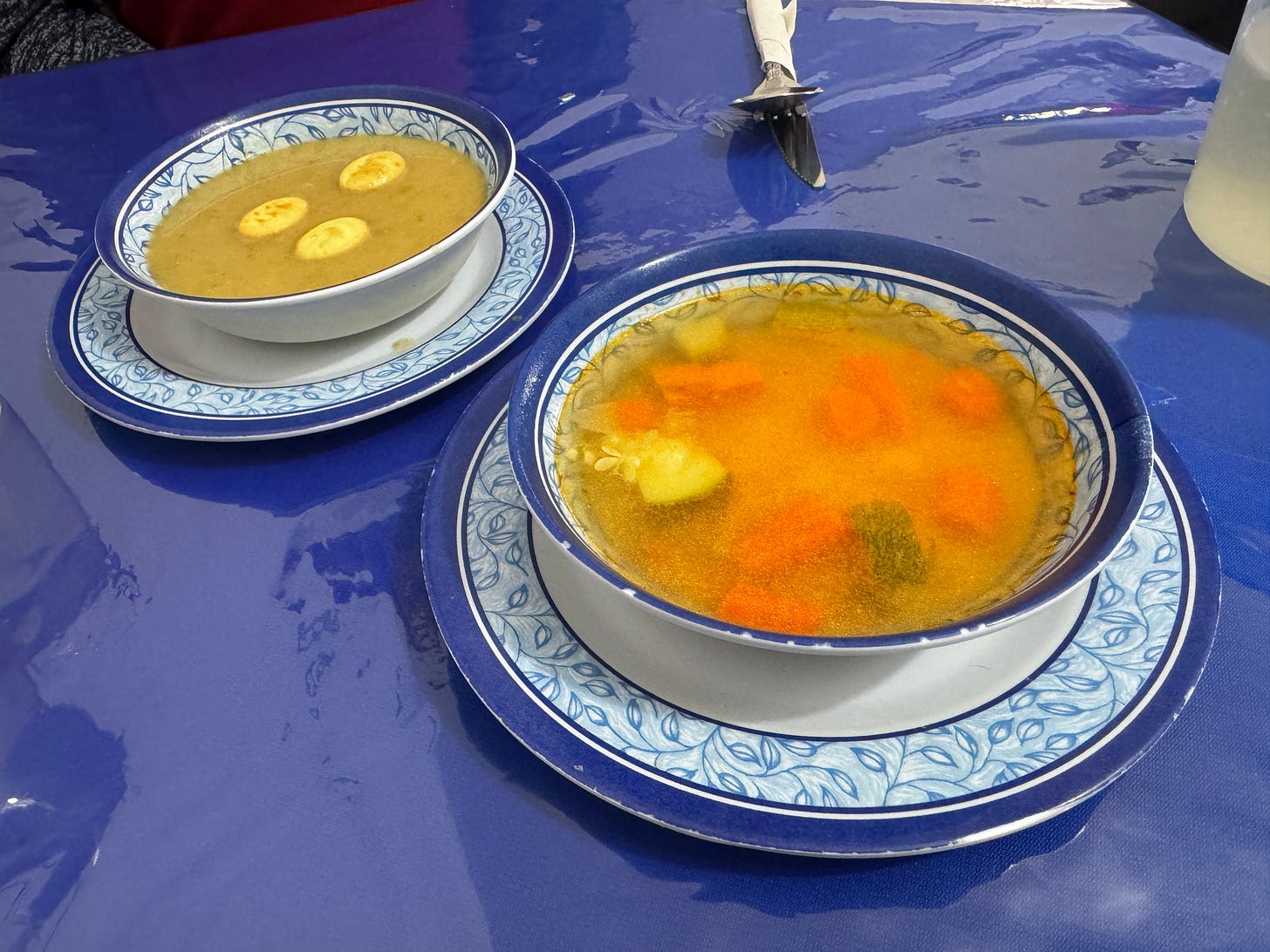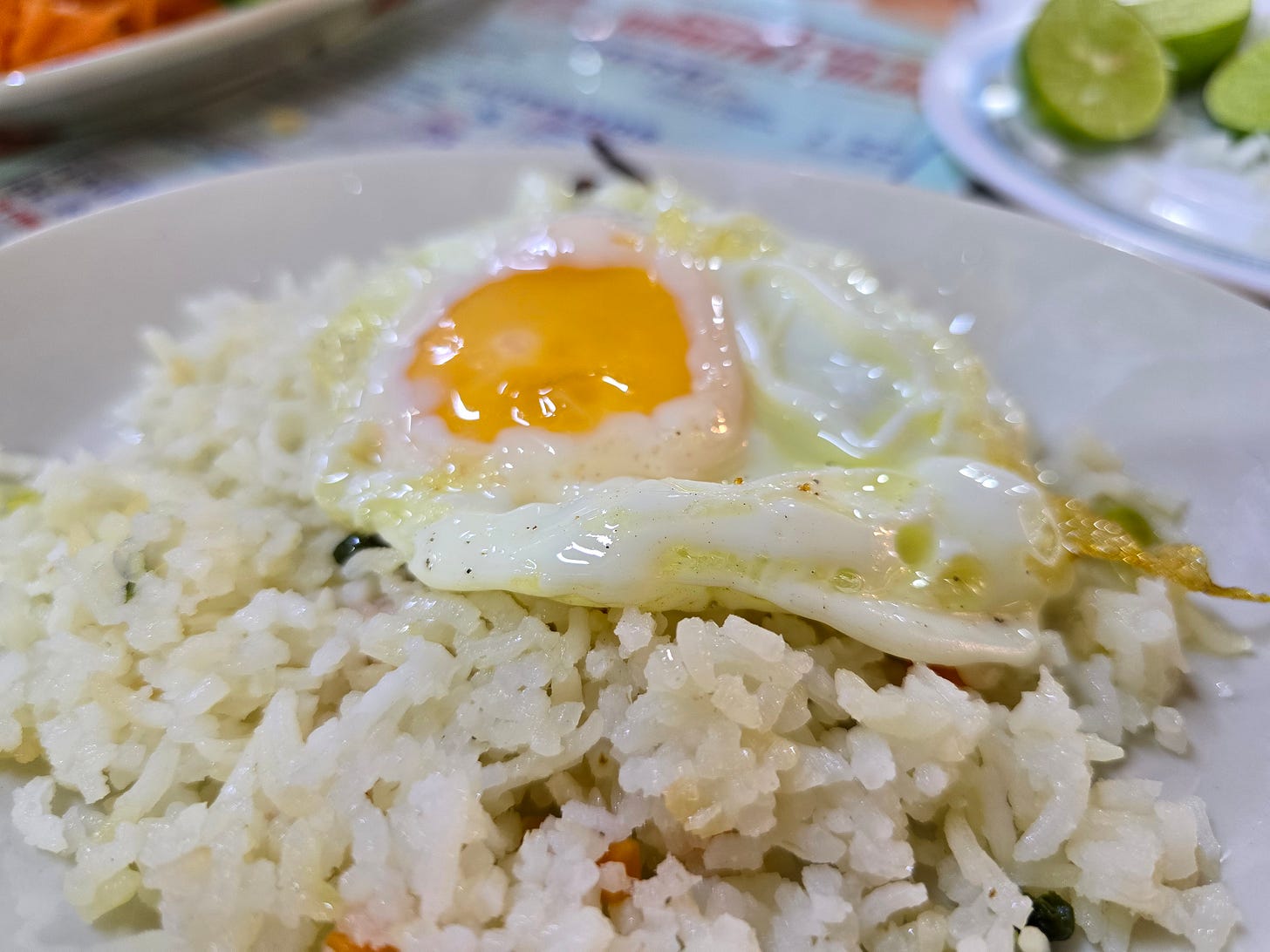Possibly the 2nd-cheapest way to eat lunch in Mexico City
And it's some of the best food you'll find anywhere
Our weekdays are usually the same wherever we are—we work.
When we’re in Pennsylvania, we make our own big, loaded salads for lunch almost every day, since it would take too long and cost too much to go out to eat.
But in Mexico City, we have great options for fast, inexpensive lunches. They’re called cocinas económicas (roughly, affordable kitchens) or comida corrida (fast food, but not the kind you’re probably thinking of).
You can find these little restaurants throughout the city. They serve delicious, home-cooked meals, usually for $70 to $85 MXN ($3.75 to $4.56 USD). They’re places where people who live or work nearby can get a good lunch.
We spent a lot of time in Mexico City before we got brave enough to try a cocina económica. Maybe it’s because they’re focused on serving locals, not on attracting tourists—we thought they were a little intimidating. We walked by a lot of them, looked inside curiously, but didn’t feel comfortable going in.
Finally, we gathered our courage and tried one, and we quickly discovered how special these places are. Now, they’re our go-to places for weekday lunches.
What’s a cocina económica like?
These casual restaurants usually have a whiteboards or chalkboards outside and inside with a handwritten menu del día (menu of the day).
They almost always follow this formula:
Soup: There are usually two choices, and a common option is consommé made with chicken broth, vegetables like potatoes and carrots, and rice.
Appetizer: Again, you usually have two choices. Rice is almost always one option, along with simple pasta without a heavy sauce, or a small salad like nopales (cactus leaves), shredded carrots, or jicama.
Main course: Here, you might have five or 10 options. You’ll generally see dishes like chicken or cheese enchiladas, mole with chicken or pork, chicken milanesa, chicken cordon bleu, or steak with sauce. Sometimes, the main courses will fall into two categories—cheaper meals and slightly more expensive meals. (The top photo on this page shows two price points.)
Dessert: You’re usually offered something small like a fun-sized candy bar, a lollipop, or a little cup of Jello.
Drink: A pitcher of agua fresca (juice and water) usually comes with the meal. The juice flavor will be different depending on the day. You can swap it out for a pitcher of plain water or order a soft drink or, sometimes, a beer.
The menu selections rotate in and out, so if you walk by on Monday and you don’t see anything you like, try again another day. Our favorite dish in these places is pollo con mole verde (chicken with green mole) and sometimes we’ll check two or three cocinas económicas to see who’s serving it that day.
How do you order?
These restaurants are a little different from most, since you look at the menu board either outside of the restaurant or hanging on the wall inside—usually, nobody hands you a menu.
It’s understood that you want to eat quickly and get back to whatever you’re doing that day. So, when the server comes to your table, they will probably be ready to take your order, at least for your first course, and often for everything except dessert. You can ask for a minute if you need one, but most customers know exactly what they want and order immediately.
The people who work there don’t usually speak English. But they always seem happy that we’re there, and they make sure we get the food we want and have a good experience. Plus, it gets easier to interact as our Spanish gets better.
What’s the meal like?
You’ll usually get a pitcher of agua fresca right away, and if you finish it, they’ll bring more. The soup comes out quickly, too.
When you’re finished with your soup, they’ll bring out the rice, pasta, salad, or whatever you ordered for your second course. (Tip: You can ask for an egg (huevo) on top of the rice if you want to make it a little more interesting.)
A little while later, the third course comes out. This is where things get interesting, and why we love these places. Most of these cocinas economicas have been run by the same family for decades, so they’ve perfected whatever they serve.
The main course is a hearty, homestyle meal that will carry you over to the late (by our standards) Mexican dinner time. Like we said, green mole is our favorite, but if they have mole poblano (Pueblo-style) or mole negro (black) we’ll often get one of those instead.
When you’re done, they might ask you if you want dessert or just bring out a basket or bucket of wrapped candies—something sweet to end your meal, but nothing fancy.
When you ask for the check (la cuenta, por favor), sometimes they just tell you the amount you owe. Spoken numbers can be tricky if you don’t know much Spanish, but the price of your meal is written on the menu board so you can figure it out if you don’t understand what they say.
Some cocinas economicas take credit cards, but many are cash-only (look for “solo efectivo”). Mexicans may or may not tip in these places. We do. All in, we’ll generally spend $8 to $10 USD for lunch for both of us. It costs that much for one breakfast meal at McDonald’s in the U.S. these days.
One Spanish word to try in these places
Mexicans use the word “provecho,” which roughly translates to “enjoy your meal” or “bon appetit.” It’s used in other types of restaurants, too, but we hear it most often in smaller, local places like cocinas económicas.
Your server might say “provecho” when they bring out your main course. But what’s different about this custom is that other customers will say it too, usually when they’re coming in or they’ve finished their meal and they’re leaving.
So, it’s nice to say “gracias” if someone says “provecho” to you, and to say “provecho” to others as you are entering or leaving. It’s one of the customs we like most about Mexico.
So, what’s cheaper than a cocina económica?
As affordable as these restaurants are, you can get usually get a cheaper meal at a street-side taco stand. You’ll find tacos as cheap as $12 MXN ($0.64 USD) all over the city. Granted, you'll be outside and will eat standing up or, of you're lucky, on a small plastic stool.
Ready to give it a try?
Even if you’re visiting Mexico City for a short time, it’s worth getting lunch at least once at a cocina económica. It’s not just that these restaurants are a good way to save money. They serve incredibly good meals—you’re not skimping when you eat there. And once you understand the format, it’s relatively easy to order, even if you don’t know Spanish.
Most cocinas económicas start serving lunch at 1 pm and close around 5 or 6 pm and they are often open Tuesday though Friday or Saturday. They’re usually less busy on the early side. Once in a while you’ll find one that serves breakfast.
Our favorites are all in our neighborhood, since we’re usually trying to eat quickly and get back to work. If you’re in the southern part of Roma Norte, try:
You might also find cocinas económicas in traditional mercados. Our local mercado, Mercado Medellín, has an area that contains several small restaurants and juice stands. Our favorite, Cocinas Juanita y Hijas, is a friendly little place that gives you a menu, so you don’t need to be ready to order right when you sit down. Try the mole verde con pollo—you won’t be disappointed!
For more of out thoughts, check out our YouTube video on cocinas económicas.












Comida corrida always hit the spot.
Always love the word Provecho!!